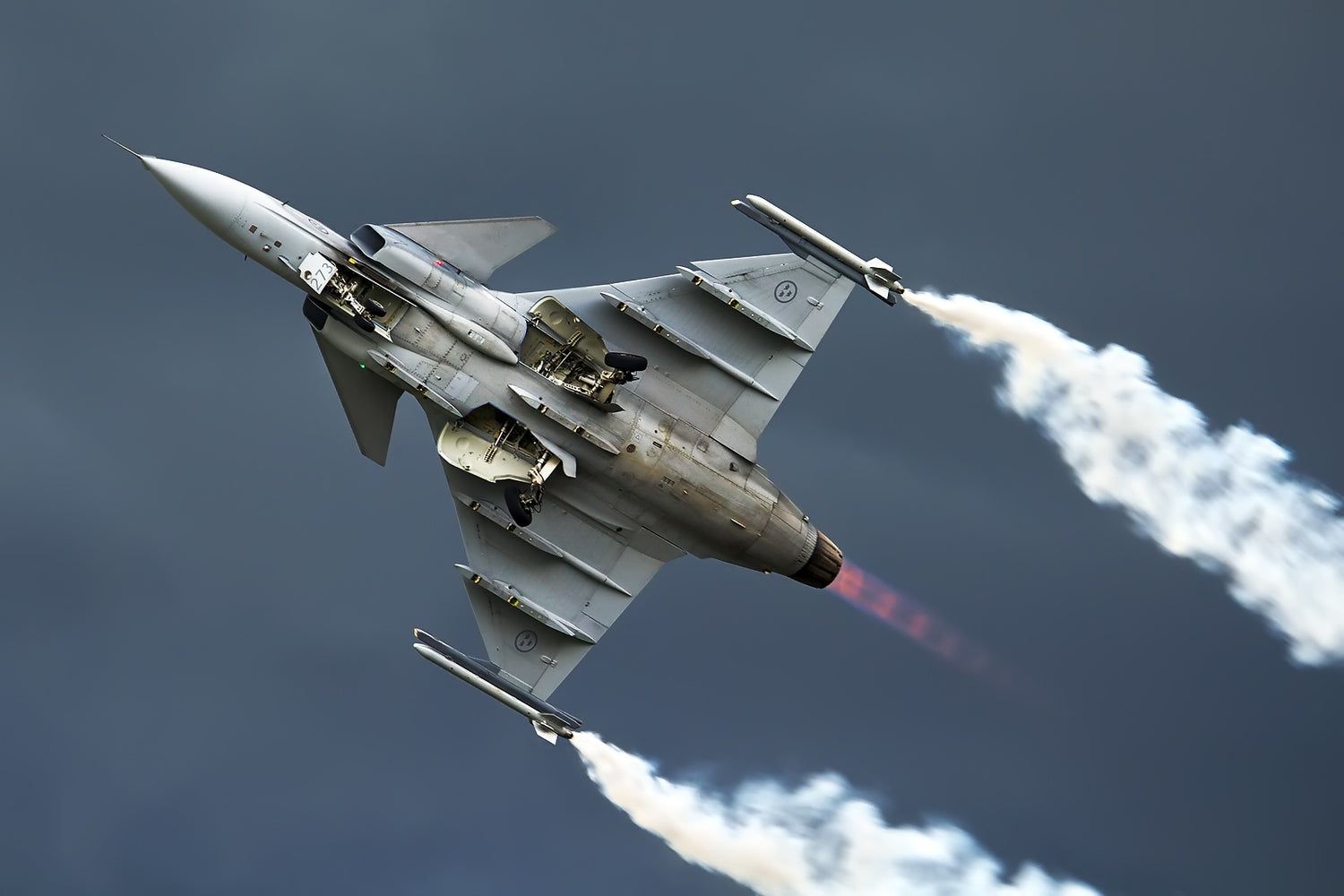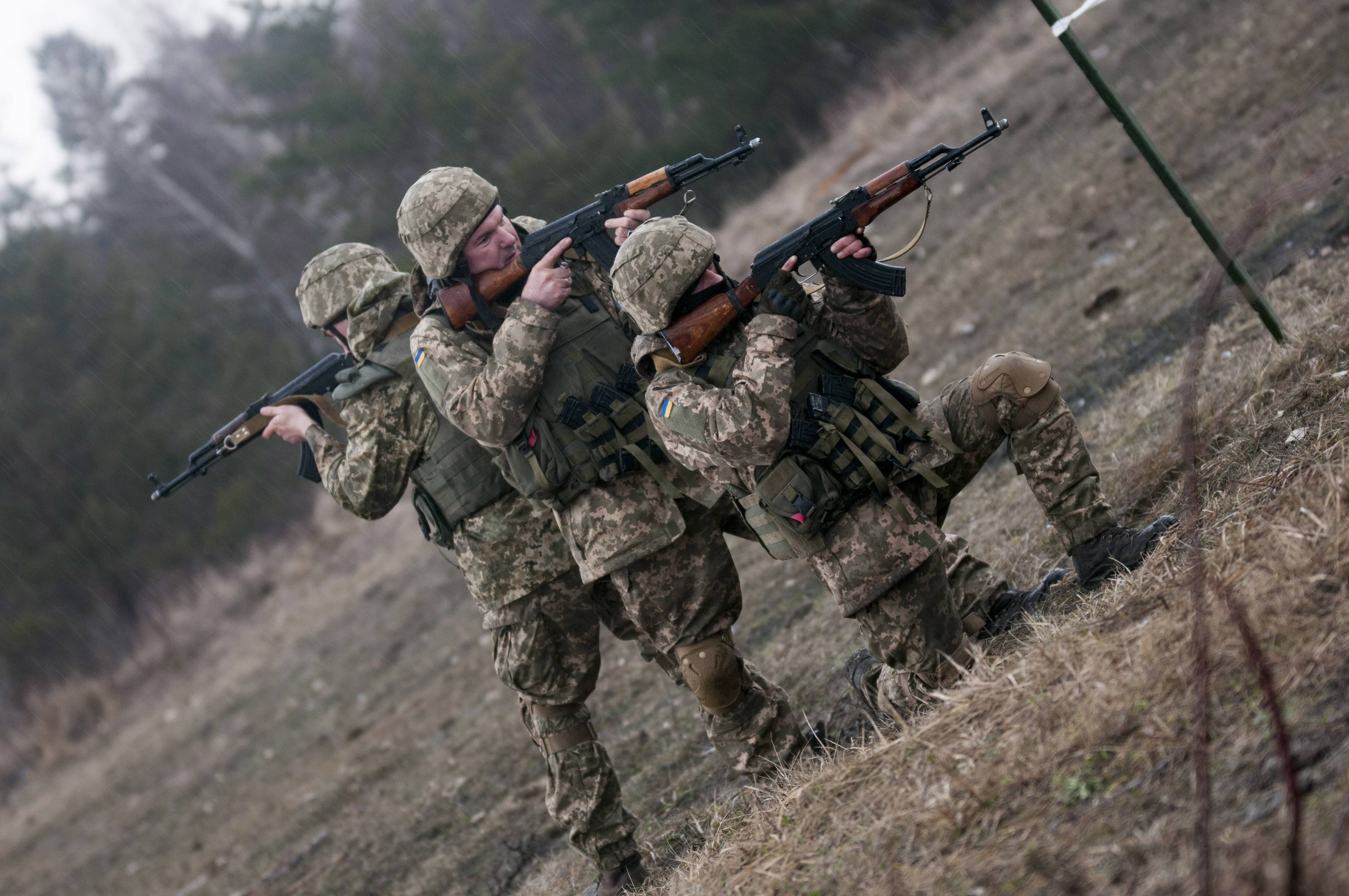Saab JAS-39C Gripen. Oleg V. Belyakov - AirTeamImages
I sometimes wonder… How did Putin think Europe would respond when he invaded Ukraine?
“Surely”, he must have reasoned, “there was no response after I annexed Crimea and the Donbas in 2014, except for some minor sanctions. Why would this time be any different?”
In what will likely go down in history as the greatest miscalculation in the 21st Century, Russia’s war in Ukraine is a war of self-inflicted injury.
And whether he realizes it or not, Putin has done more damage to the Russian Federation than any Russian leader since Tsar Nicholas II.
NATO is significantly stronger today than it was even a year ago thanks to Russian aggression.
When Russia’s incompetent military began to rack up a gruesome tally of war crimes — and when Putin’s troops showed routine brutality that hasn’t been seen on the continent on a large scale in four generations – Europe was shocked into action.
In light of Russia’s naked aggression, formerly neutral countries, like the Nordic states Sweden and Finland, began to consider full membership in NATO.
Finland joined first in April, bringing the number of member states to 31.
Since then, the Swedish public support picked up steam. By June of 2023, fully 65% of Swedes supported joining the alliance.
In July, Turkey’s Erdogan gave Sweden's NATO application the green light – the final obstacle before Sweden could join.
Well, technically, Hungary has yet to ratify Sweden's entry but has made it clear that it will not delay the issue any further.
Sweden's military weakness came into full view in 2013 when Russian bomber planes were able to simulate an attack on Stockholm. Sweden needed NATO help to ward them off.
So, what could Sweden contribute to the alliance that would check future Russian expansion west?
Military capabilities
Sweden ended universal male conscription in 2010, only to reactivate it in 2017. The Swedish defense forces are currently educating 5,000-6,000 conscripts per year.
Compared to Finland, which has a sizable reserve force of 900,000, Sweden’s manpower is downright paltry. But manpower is not where Sweden shines.
The Swedish navy is modern and lethal with 387 ships, including 4 submarines (3 Gotland, 1 Södermanland), 7 corvettes (5 Visby, 2 Gävle), 9 minesweepers (5 Koster, 4 Styrsö), 13 larger patrol boats (2 Stockholm and 11 Tapper) and many specialized ships with different support duties.
The Swedish air force is nothing to sneeze at either: With 210 aircraft, 94 of those being JAS39C/D Gripen (60 JAS39E on order), it is extremely robust.
The Gripen aircraft participated in Red Flag – Alaska, a multinational air combat exercise hosted by the United States Air Force.
The Gripen flew simulated combat sorties against F-16 Block 50, Eurofighter Typhoon, and F-15C and scored ten kills, including a Eurofighter Typhoon and five F-16 Block 50s on day one of the exercises with no losses!
Sweden’s excellent Gripen fighter is likely why Sweden passed on the F-35.
But the big win for NATO will be Sweden’s submarines.
The shallow Baltic, called a "flooded meadow" by some in marine circles, has an average depth of around 60 meters, making it too shallow for the nuclear-powered submarines that make up the bulk of Russia's submarine fleet (and all of the U.S. Navy's.)
Sweden has three advanced Gotland-class submarines with two new designs being delivered in 2027 and 2028. Not to mention Sweden’s regional underwater expertise… They have been operating underwater in the Baltic since 1904.
No other neighboring Baltic nation has as much experience in the region.
Strategic location and intelligence sharing
Speaking of the Baltic, Sweden joining NATO has the effect of turning the Baltic Sea into a “NATO lake.”
Because of the way a nation’s territorial waters extend out from its shores, any Russian submarines launching from Leningrad Naval Base would be easily tracked by NATO, since Finland and Sweden would be obligated to share intelligence with the alliance.
As it stands now, Russian submarines sail outside the territorial waters of Estonia, Latvia, and Lithuania to the Danish Straits to reach the Atlantic. But with Finland and Sweden in NATO, it would be impossible for Russia to sail from this base without crossing into NATO waters.

Unless Russia has a real-life Red October, Russian subs can no longer hide from NATO
What’s more, Sweden announced it would spend $163 million to ramp up its forces on Gotland, a 109-mile-long Swedish island, including expanding barracks to house more troops.
Sweden joining NATO also means an increased presence in the Arctic – a place where Russia has been making major military infrastructure moves.
More than 50 percent of the Arctic Ocean coastline is Russian territory and as the climate crisis continues to reveal more waterways through the ice, NATO will now have a foothold in the region to counter Russian expansion.
One of NATO’s strengths is its ability to share Joint Intelligence, Surveillance, and Reconnaissance (JISR) information among its member states.
As you can imagine, this gives decision-makers better situational awareness of conditions in and around the EU.
In February 2023, a group of NATO Allies, together with Finland and Sweden, announced plans to launch the Alliance Persistent Surveillance from Space (APSS) initiative, which will transform the way NATO gathers and uses data from space, and significantly improve NATO’s intelligence and surveillance.
This means tapping into military and commercial space-based assets for Sweden’s benefit.
In return, Sweden will get read-in on vital U.S. intelligence from America’s massive global intelligence network.
Cybersecurity and technical expertise
Sweden is a European leader in Internet of Things (IoT) cybersecurity and AI security.
Their climate of innovation in tech means that their industry, academia, and military often collaborate to create a favorable research environment. They are also regular contributors to larger European cybersecurity activities.
But out of all of their industries, military cybersecurity dominates their market with a projected market volume of $1 billion in 2023.
The Organization for Economic Co-operation and Development (OECD) finds Sweden is among the top OECD countries in deploying digital technology across households and businesses, with widespread Internet use across the country and narrower digital divides by age, education, and income than most countries.
The availability, quality, and affordability of high-speed Internet in Sweden are among the best in the world.
Because the Swedish people demand digital security from their public and private sectors, the Swedish government promotes a clear vision of digital security risk management as an economic and social responsibility.
Contributing Swedish brain power to NATO’s cybersecurity efforts could help combat coordinated Russian attacks and misinformation campaigns like the U.S. experienced in the 2016 election cycle.
Humanitarian missions
This is where NATO is going to get its money’s worth from Sweden’s membership.
Historically, Sweden has a proud history of making significant contributions to international humanitarian efforts. These include refugee assistance, disaster response, peacekeeping missions, capacity building, and humanitarian funding.
For instance, Sweden has been helping the people of Yemen for nine years.
The ongoing nature of the Yemeni conflict has led to a collapse in nearly all sectors of life, from the economy to the healthcare system, and from food access to other societal services.
Sweden helped raise $1.2 billion from international sources and itself pledged $25 million in vital unearmarked funding.
Sweden also has a long history of development aid around the world, notably in the Middle East and North Africa. Again, as climate change continues to displace millions of people in the decades to come, Sweden’s experience in humanitarian missions will be essential knowledge for the alliance.
Russia’s Ukrainian folly
I keep coming back to Putin’s mindset when he decided to invade Ukraine.
Did he perform a cost/benefit analysis with the FSB and the ministry of defense? If so, certainly this scenario was on the “worst case scenario” list.
In reality, Putin probably didn’t consult anyone but his inner circle and made the decision based on a massive miscalculation of Ukrainian resistance and an overoptimistic assessment of his own military’s capability.
When will Russians realize that their quality of life under this dictator has steadily declined since the mid-2000s?
Regardless, whether intentional or unintentional, Putin has strengthened the very alliance that he sought to create a buffer against when he invaded his neighbor.
With Sweden joining NATO, Putin’s self-inflicted injury might just be lethal to his regime.
For more Ukraine War coverage, follow Wes O'Donnell on Medium.





Leave a comment
This site is protected by hCaptcha and the hCaptcha Privacy Policy and Terms of Service apply.